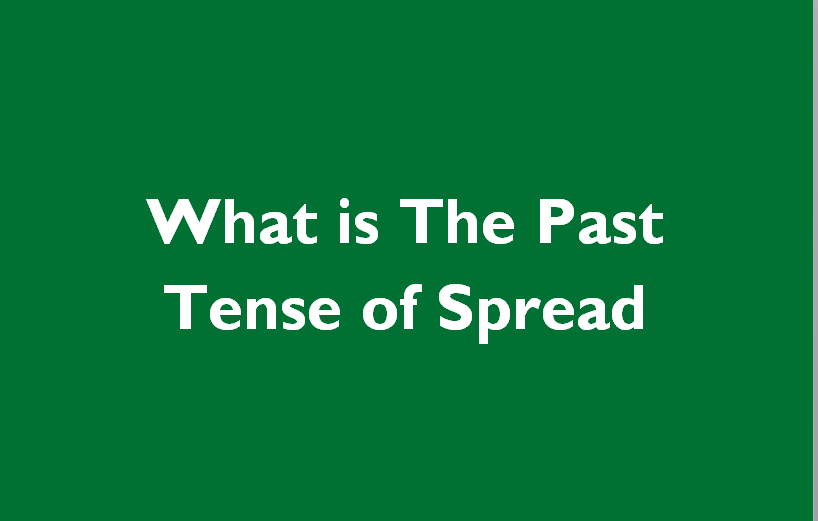10 Alternatives To Saying “Sorry About The Confusion”
Apology for the confusion is an expression conveying regret for misunderstanding or unclear communication. It acknowledges the presence of confusion and expresses remorse.
This phrase is commonly used to rectify misinterpretations in different interpersonal and professional settings.
However, there’s a wealth of alternative expressions that not only convey empathy but also provide clarity and understanding in various situations.
Then again, there have been a lot of questions about this term, and many have been asking If It’s sorry for the confusion or sorry about the confusion. Allow me to shed light on these phrases quickly.
“Both ‘sorry for the confusion’ and ‘sorry about the confusion’ are commonly used expressions conveying regret for a misunderstanding. While interchangeable, ‘for’ implies responsibility, and ‘about’ suggests acknowledgment. The choice depends on the speaker’s preference in addressing the source of confusion.”
Contents
- 1 Other Ways You Can Say “Sorry About The Confusion”
- 1.1 1. Apologies For The Mix-Up (Professional)
- 1.2 2. Regretful For The Misunderstanding (Formal)
- 1.3 3. My Sincere Apologies For Any Confusion (Formal)
- 1.4 4. Pardon The Confusion (Informal)
- 1.5 5. Clarification Is In Order; My Apologies (Professional)
- 1.6 6. I Regret Any Inconvenience Caused By The Confusion (Formal)
- 1.7 7. I Acknowledge And Apologize For Any Confusion (Professional)
- 1.8 8. I Take Responsibility For Any Confusion And Will Address It Promptly (Professional)
- 1.9 9. Expressing Remorse For Any Unintended Confusion (Informal)
- 1.10 10. Apologizing For Any Disruption In Communication (Professional)
Other Ways You Can Say “Sorry About The Confusion”
READ ALSO: 10 All The Best For Your Future Endeavours Messages
- Apologies for the mix-up.
- Regretful for the misunderstanding.
- My sincere apologies for any confusion.
- Pardon the confusion
- Clarification is in order; my apologies
- I regret any inconvenience caused by the confusion
- I acknowledge and apologize for any confusion
- I take responsibility for any confusion and will address it promptly
- Expressing remorse for any unintended confusion
- Apologizing for any disruption in communication
Plus, you will learn how to say apologies for the confusion In an email professionally, formally, and Informally. Let’s get to the details.
1. Apologies For The Mix-Up (Professional)
Have you ever received a confusing email or document at work and found yourself muttering, “Say sorry about the confusion”? Consider an alternative: “Apologies for the mix-up.”
This word steps up your apology game in professional settings, acknowledging a mistake without dwelling on it.
For Instance, Sarah, the diligent project manager, accidentally sends an outdated report to her client, Alex. Instead of resorting to “Sorry about the confusion,” Sarah crafts a concise email:
Hi Alex,
Apologies for the mix-up earlier, it seems there was a glitch in the system. Attached is the correct and updated report for your review.
Thank you for your understanding.
Best regards, Sarah
In this scenario, Sarah acknowledges the error without making it the focal point. The phrase “Apologies for the mix-up” maintains professionalism, assuring Alex that the oversight is acknowledged and rectified without unnecessary apologies.
2. Regretful For The Misunderstanding (Formal)
“Regretful for the misunderstanding” is more of a refined expression than the typical “Say sorry about the confusion” as It has a sense of genuine remorse, acknowledging a mistake.
Imagine a scenario where James, who is a seasoned executive, mistakenly sends the wrong proposal to his client, Mr. Thompson. To maintain formality, James sent an email:
Dear Mr. Thompson,
Regretful for the misunderstanding in our recent communication, I realize that there was an oversight in the proposal sent earlier. Please find the correct version attached for your consideration.
I appreciate your understanding in this matter.
Best regards, James
In this context, James employs “Regretful for the misunderstanding” to express sincere apologies without diminishing the professional tone. This term ensures accountability while maintaining a respectful demeanor in formal communication.
READ ALSO: A List of Words That Begin With Ni
3. My Sincere Apologies For Any Confusion (Formal)
Imagine finding yourself entangled in a formal mix-up, perhaps a scheduling error or a miscommunication that leaves everyone confused.
Rather than the usual everyday apologies, consider expressing regret with formality using the phrase, “My sincere apologies for any confusion.”
Now, let’s peek into an example: Tino discovers a scheduling glitch for a high-profile meeting with Olivia, the client. To address the problem gracefully, check out Tino’s email:
Dear Ms. Olivia,
My sincere apologies for any confusion regarding the upcoming meeting schedule. It has come to my attention that there was an oversight in our initial communication.
To ensure a smooth and seamless experience, please find the corrected meeting details below…
Thank you for your understanding and continued partnership.
Kindly regards, Tino
In this instance, Tino owns up to the confusion while maintaining a formal manner, reinforcing the commitment to a smooth collaboration.
The phrase “My sincere apologies for any confusion” has a level of professionalism to the acknowledgment of the mistake.
4. Pardon The Confusion (Informal)
Sometimes, the office jargon feels too formal, and “Pardon the confusion” offers a friendly touch to acknowledging slip-ups.
This expression is your informal apology word which could allow you to smooth out misunderstandings.
Consider this scenario: Jake mistakenly sends an old meeting agenda to his colleague, Emily. Opting for a casual vibe, here’s Jake’s email:
Hey Emily,
Pardon the confusion on my end, it seems like I hit the wrong button. Please find the correct meeting agenda attached.
Let me know if you have any questions.
Cheers, Jake
Here, “Pardon the confusion” lightens the mood, making the apology feel more like a friendly chat than a formal acknowledgment.
5. Clarification Is In Order; My Apologies (Professional)
At the professional level, when the need for clearing up confusion arises, the phrase “Clarification is in order; my apologies” stares forward.
It signals a recognition of the misconception and a commitment to setting things right without overcomplicating the situation.
Let’s consider an occasion where Bony put up an incorrect pricing quote to his client, Ella. Rather than resorting to the predictable “Say sorry about the confusion,” James chooses a more fine approach:
READ ALSO: Words That Start With Z and End With A You Should Know
Dear Ella,
Clarification is in order, and I extend my sincere apologies for any confusion caused by the earlier pricing quote. Please find the revised and accurate quote attached.
Thank you for your patience and understanding.
Best regards, Bony
Here, James seamlessly intertwines an apology with a commitment to clarity.
6. I Regret Any Inconvenience Caused By The Confusion (Formal)
“I regret any inconvenience caused by the confusion” communicates remorse in a cultured manner. Think about Edward who mistakenly sent the wrong invoice to his client, Montgomery.
In a formal email, he composes a message that exudes professionalism:
Dear Ms. Montgomery,
I regret any inconvenience caused by the confusion surrounding the recent invoice. It appears there was an oversight in our records. Enclosed is the corrected invoice (#12345) for your attention.
Your understanding in this matter is greatly appreciated.
Kind regards, Edward
In this instance, Edward conveys his regret without excessive apologies, maintaining a formal style. “I regret any inconvenience caused by the confusion” subtly addresses the issue, assuring Montgomery that corrective measures are taken without overshadowing the resolution.
7. I Acknowledge And Apologize For Any Confusion (Professional)
When things get a bit tangled In a proficient space, it’s not uncommon to want to express a heartfelt acknowledgment and apology without diving too deep into the mix.
Use the term, “I acknowledge and apologize for any confusion”, It’s a more formal way of owning up to any incomprehension.
Visualize a case where Mark wrongly sends the wrong statement to his client, Davidson. Instead of using the typical “Say sorry about the confusion,” Mark opts for a composed email:
Dear Ms. Davidson,
I acknowledge and apologize for any confusion that may have arisen regarding the recent statement sent. It appears there was a clerical error on our end. Please find the corrected invoice attached.
Thank you for your understanding.
Best regards, Mark
Here, Mark uses the phrase to gracefully admit the oversight and reassure Davidson that the matter is being addressed with the necessary corrections.
8. I Take Responsibility For Any Confusion And Will Address It Promptly (Professional)
If the stakes are high and you need to own up to a mistake, saying, “I take responsibility for any confusion and will address it promptly” takes accountability to a whole new level in a professional manner.
This expression helps you assure others that you’re on top of the situation, ready to fix any challenge.
Imagine Kensington realizing an error in the client’s billing statement. Rather than saying “Sorry about the confusion,” Kensington opts for a more impactful approach:
READ ALSO: A Comprehensive List of Words That Start With THUM
Dear Mr. Bryan,
I take responsibility for any confusion caused by the recent billing statement oversight. Rest assured, I am addressing this matter promptly to ensure a corrected statement reaches you by the end of the day.
Thank you for your understanding and patience.
Best regards, Kensington
9. Expressing Remorse For Any Unintended Confusion (Informal)
Forget the overused “Say sorry about the confusion”, “Expressing remorse for any unintended confusion” is a better expression you can use in informal environments, be it among friends, family, or colleagues.
Let’s assume a case where Drake accidentally confuses meeting times in an email to his coworker, Emma. Instead of saying “Sorry about the confusion,” Jake keeps it informal:
Hey Emma,
Expressing remorse for any unintended confusion in my last email, seems like I mixed up the meeting times. My bad!
The correct time is 2:00 PM. Hope that works for you.
Cheers, Drake
10. Apologizing For Any Disruption In Communication (Professional)
Acknowledging disruptions without using the normal “Sorry about the confusion” can be a game-changer. Instead, use a sophisticated approach: “Apologizing for any disruption in communication.”
This term quietly conveys regret without dwelling on the chaos. Give thought to a case where Jane encounters a technical glitch causing delays in client communication.
Choosing not to use the usual “Say sorry about the confusion,” James sent a formal email:
READ ALSO: A Comprehensive List of Words That Start With Mon
Dear Ms. Thornton,
I am reaching out to address recent communication delays that occurred due to unforeseen technical issues. Apologizing for any disruption in communication, we have taken immediate steps to rectify the situation.
Your understanding is greatly appreciated.
Best regards, Jane


